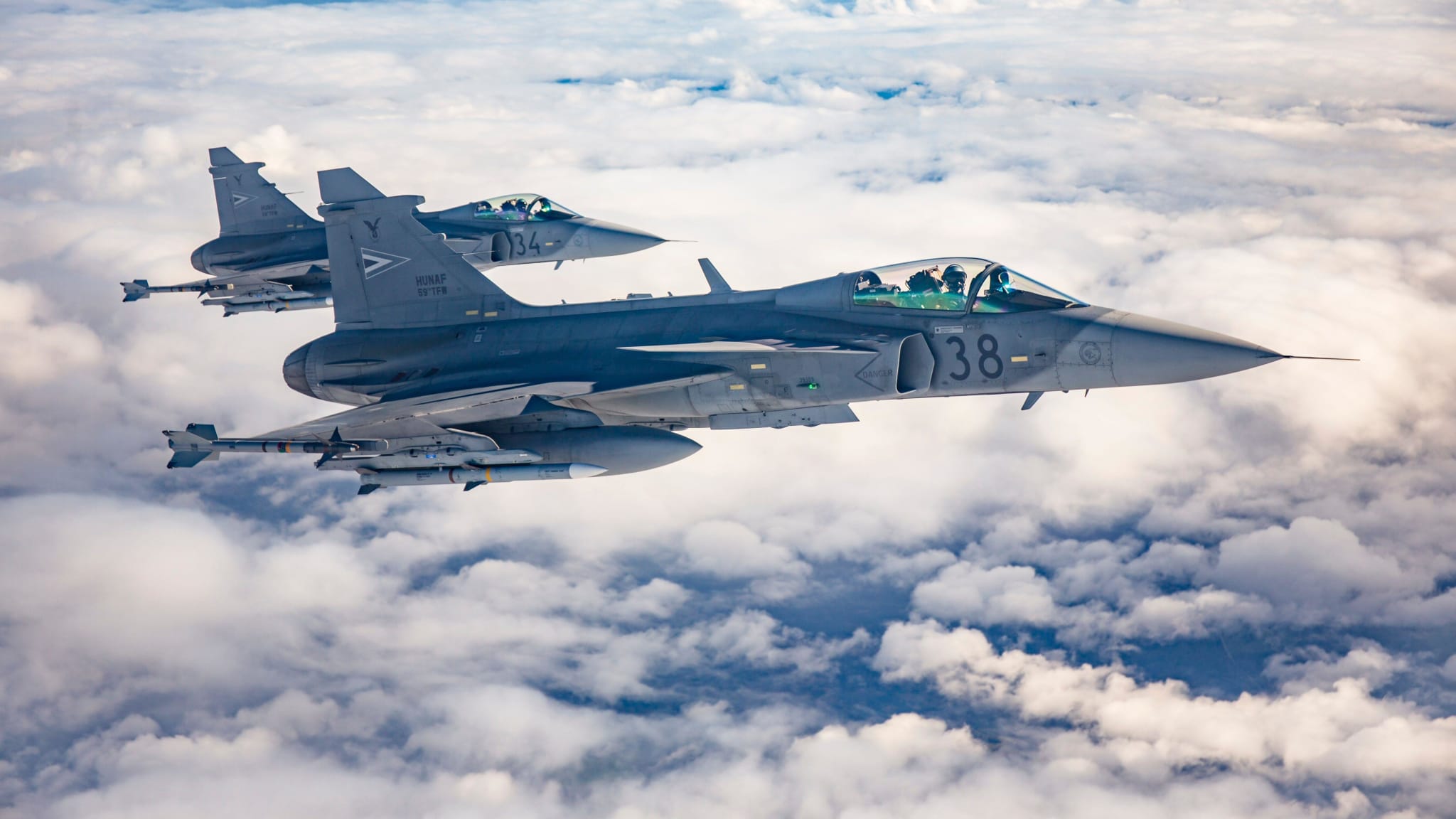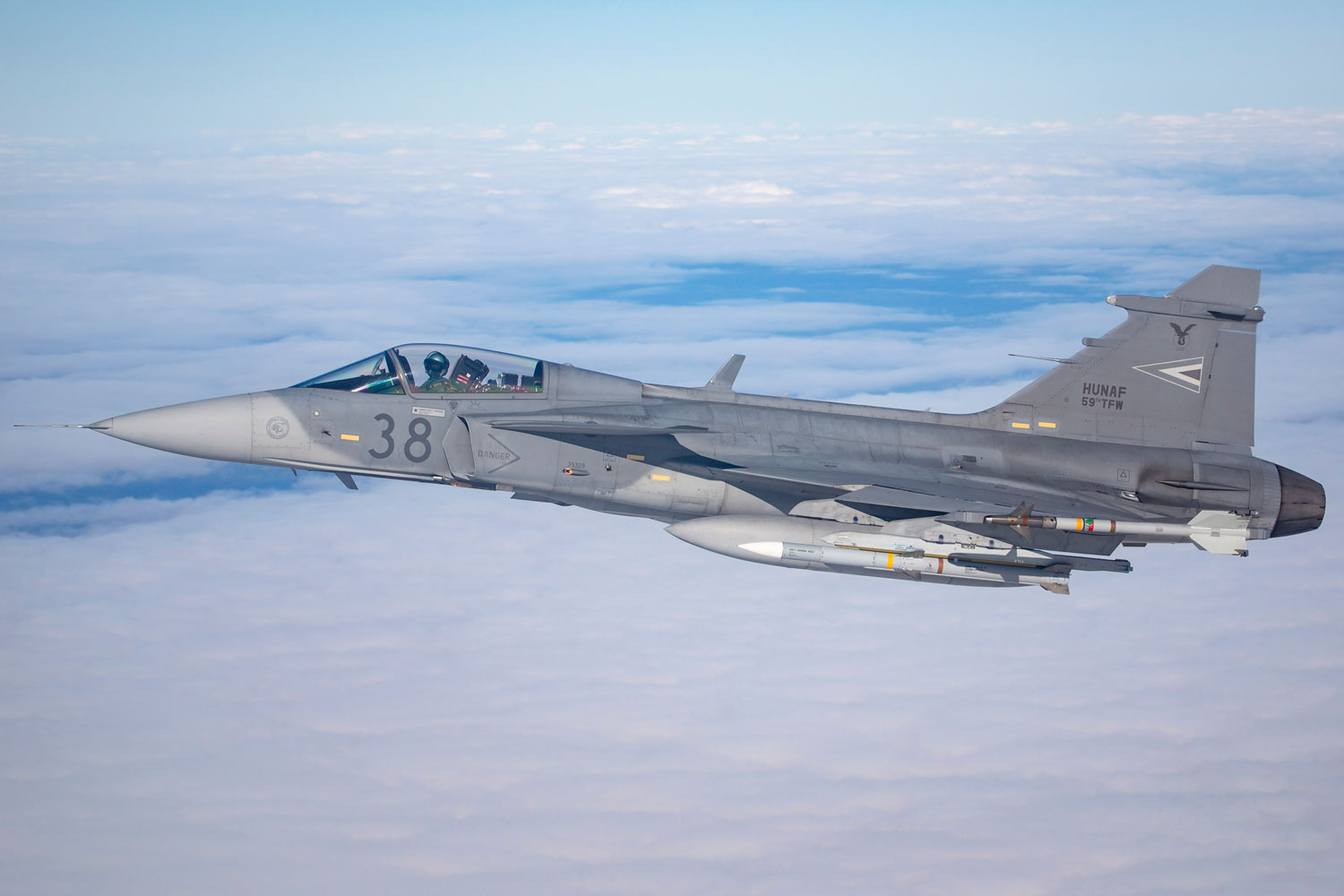While several airlines have halted their services to and from Russia, some flights from neutral countries have continued operations taking great risks.
The Hungarian Defense Forces had to scramble their Gripen aircraft after a bomb threat was reported on a Turkish commercial aircraft flying from Moscow to Istanbul in the early hours of March 21, local media Hungary Today reported.
The plane purportedly received a bomb threat over Polish territory, prompting NATO’s Joint Air Operations Center to dispatch Hungarian Gripen fighter jets to intervene.
The Gripens detected the Turkish-flagged aircraft as it entered Hungarian territory and escorted it up to the Romanian border. The Gripen aircraft remained in the area and conducted patrols for a while before returning to the Kecskemét base.

This is not the first time that the HAF had to dispatch its Gripens. On March 19, a civilian aircraft Airbus A321 flying from Georgia to Poland too had received a threat which had necessitated action from Hungarian fighter jets, the news portal cited above reported.
On March 16, a Serbian Airbus A-319 airliner flying from Belgrade to Moscow was turned back at the Hungary-Slovakia border after Belgrade’s control tower informed Hungarian air traffic control that the jet was carrying a bomb. Serbia has continued flight operations with Moscow.
The Gripen fighters of the Hungarian forces were then alerted by NATO’s Combined Air Operations Centre, which swiftly recognized the Serbian aircraft and escorted it outside Hungary’s airspace.
S predsjednikom @VladaRH @AndrejPlenkovic obišli smo mjesto pada besposadne letjelice. Danas će se iskopati glavni dio letjelice i ono što s ovog mjesta @VladaRH poručuje je to kako je ključ bolja i intenzivnija komunikacija među @NATO članicama. pic.twitter.com/zyzaQkqMZi
— MORH/MoD Croatia (@MORH_OSRH) March 12, 2022
Additionally, an unidentified Tu-141 “Strizh” reconnaissance drone crashed near Zagreb in Croatia last week.
The UAV, which is known to have originated in Ukraine, flew over numerous NATO countries, including Hungary, before diving into Zagreb. It entered Croatian airspace from Hungary at a speed of 700 kmph at an altitude of 1,300 meters, according to authorities in Zagreb.

The drone soared above Hungary for more than 40 minutes before the crash in the Croatian airspace. Though both Russia and Ukraine denied launching the drone, military analysts believe Ukraine is the only known current operator of the Soviet-era Tu-141.
Saab Gripens Of Hungary
The Saab JAS 39 Gripen is a Swedish-made single-engine, fourth-generation multi-role fighter aircraft. The C and D variants of this combat jet have a large canopy that can accommodate two people. With the most up-to-date weaponry, the Gripen C-series can carry out a wide range of air-to-air, air-to-surface, and reconnaissance operations.
The JAS 39 Gripen was first leased by Hungary in 2001, and the fighters have subsequently undergone numerous upgrades.

There are currently 12 aircraft in service that are primarily dedicated to protecting Hungarian airspace, though the Puma squadron of the Gripens has also been responsible for patrolling Slovenian airspace since 2014.
The EurAsian Times had earlier reported that Hungary’s fleet of 12 Saab Gripen C and one D type is going to be upgraded to the latest MS20 Block 2 standard. The Swedish Defence Materiel Administration and the Hungarian Government Commissioner Office inked an agreement to that effect in January 2022.
#Hungary to Upgrade its Leased #Gripen Fleet – Defense-Update: https://t.co/OL2huTgM6u via @defenceupdate @Saab You can listen to this post here: https://t.co/gRLQDNXD4A pic.twitter.com/Xpn3uLswGS
— Tamir Eshel (@defenceupdate) January 12, 2022
By improving Link16 (NATO Data Link) functionality and modernizing voice communication to the most recent NATO secure communication standard, the HunAF Gripen fleet’s MS20 Block 2 upgrade boosts communication capability dramatically. Additionally, the NATO Mode 5 Identification Friend or Foe (IFF) will help improve coalition aircraft recognition.
These upgrades to Hungary’s fleet of Gripen will improve their interoperability with other NATO fighter jets and systems. These fighters have been instrumental in protecting the airspace of this NATO country that borders Ukraine. However, Hungary’s position in this conflict could prove to be uncomfortable for the military alliance.
Hungary Shows Reluctance
Although a NATO member, Budapest chose to back Moscow in the latter’s ongoing military conflict with Ukraine.
Hungary, which is largely dependent on Russian energy supplies, has expressed its opposition to the European Union’s sanctions against Russian energy companies, with its top diplomat indicating that Budapest will not accept those measures. According to reports, the EU is considering joining the US in imposing a ban on Russian oil imports.
Hungary will not support EU sanctions against Russia in the energy sector – and opposes the no-fly zone over Ukraine and the peacekeeping mission proposed by Poland.
“In the End, we will remember not the words of our enemies, but the silence of our friends”#StandWithUkraine pic.twitter.com/8YglZoTswX
— Oleksandra Matviichuk (@avalaina) March 21, 2022
Hungarian Finance Minister Mihaly Varga said earlier that the country’s position on the current sanctions will be different from that of other countries.
He stated that “any action against Moscow would also hurt the Hungarian economy. Hungary will not support the expansion of anti-Russian sanctions in the energy sector as this would threaten both the national currency and welfare of Hungarians.”
This could divide the European Union on the sanctions issue. A number of countries in Europe are dependent on Russian energy. Perhaps, this is the reason why Germany took its time in pulling the plug on Nord Stream 2 pipeline.
Hungary said it will not allow the transit of lethal weapons to Ukraine through it's territory. Orban is siding with the war criminal Putin. At this point, I wonder how safe it is for Ukrainian refugees to flee to Hungary
— Olga Tokariuk (@olgatokariuk) February 28, 2022
Further, Foreign Minister Peter Szijjarto said during a visit to Kosovo a few days ago that Hungary will not send troops or weapons to Ukraine and will not allow lethal weapons to transit its territory in order to keep the country safe. The country has also opposed the imposition of a ‘no-fly zone’ over Ukraine, endorsing NATO’s position on the same.
Although Hungary has so far cooperated with NATO and has used its fighters to chase aircraft detrimental to the security of its own air space as well as that of its neighbors, it is not on the same page with the military alliance over several issues pertaining to the Ukraine crisis.
- Contact the author at sakshi.tiwari9555@gmail.com
- Follow EurAsian Times on Google News




